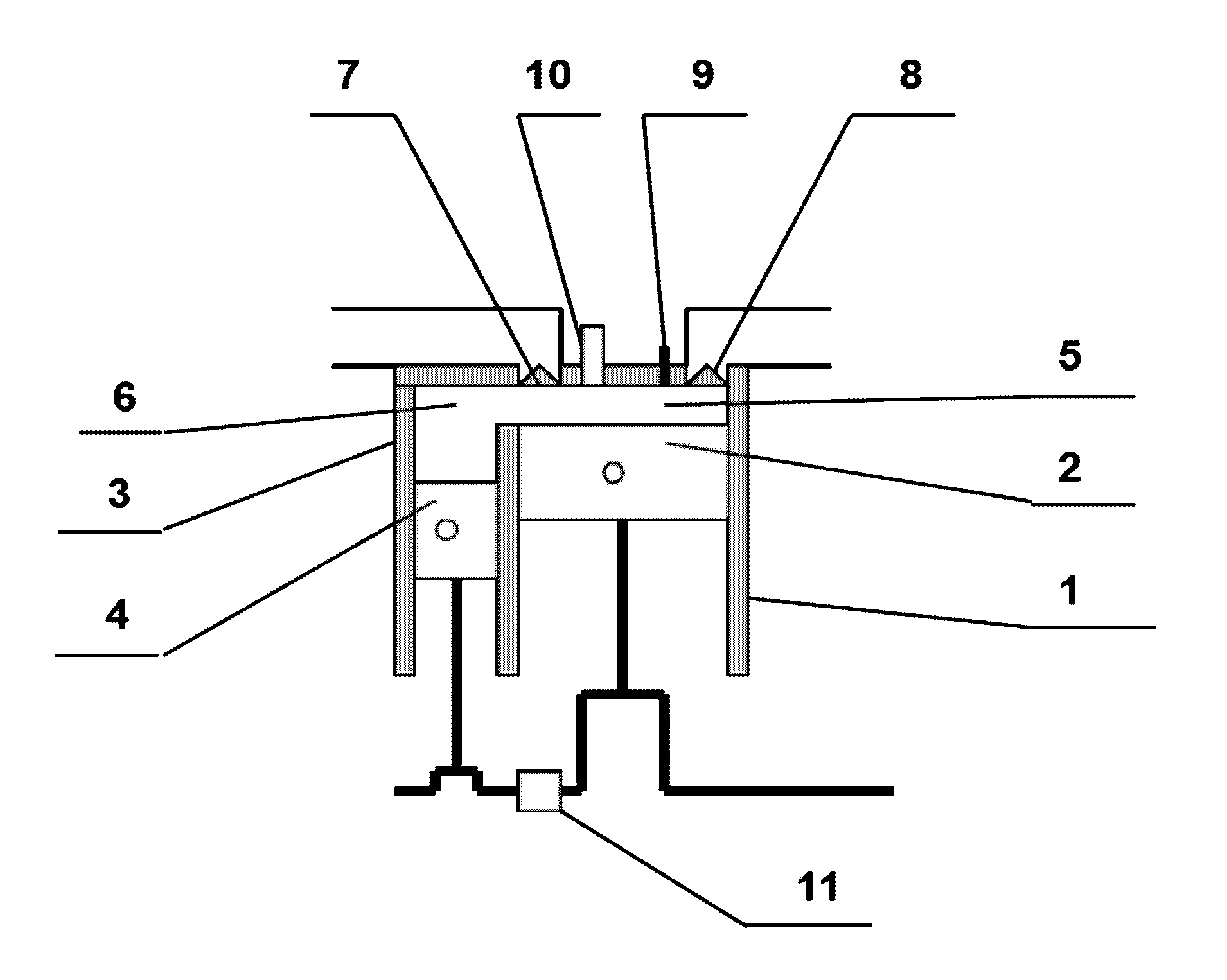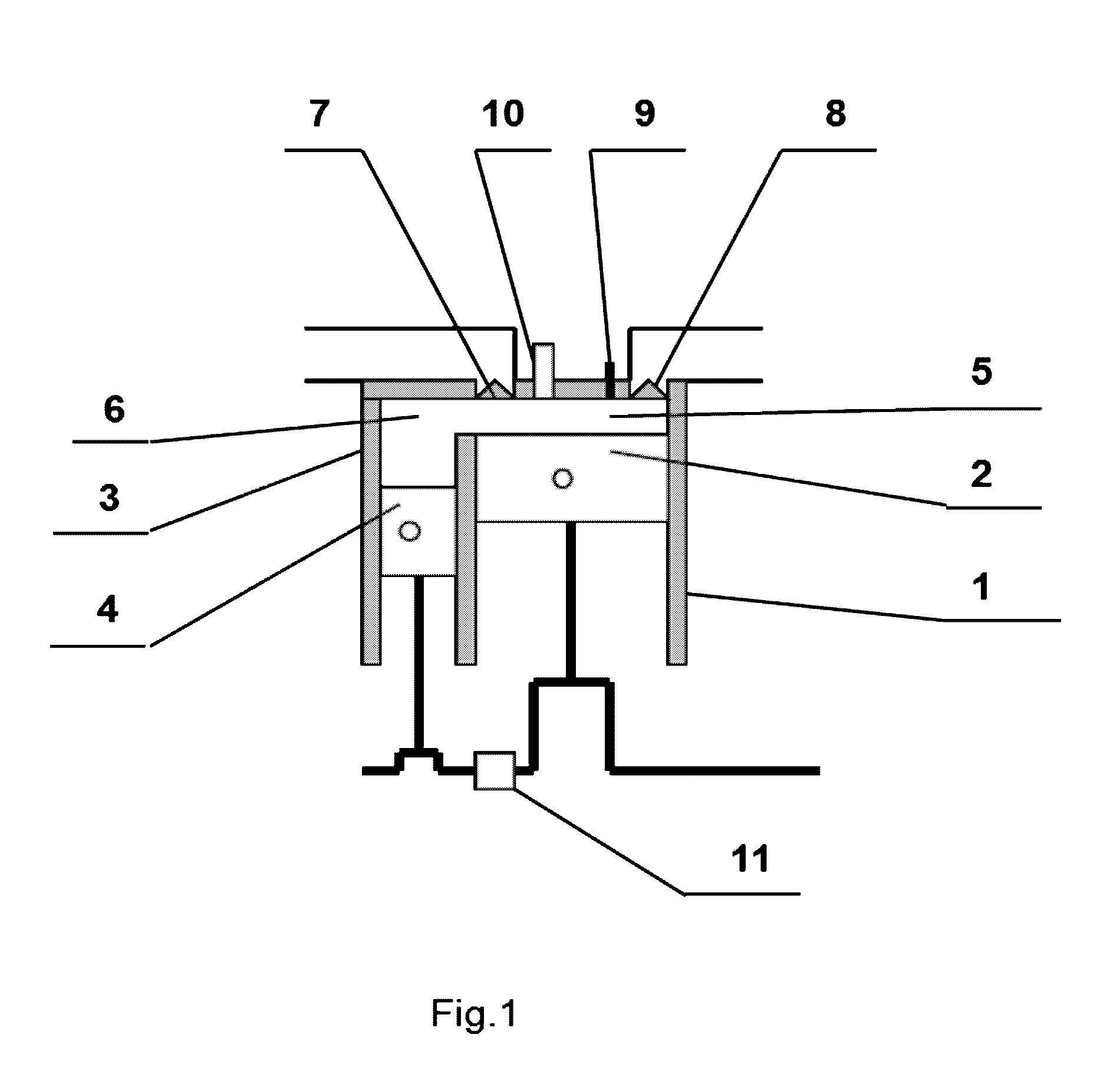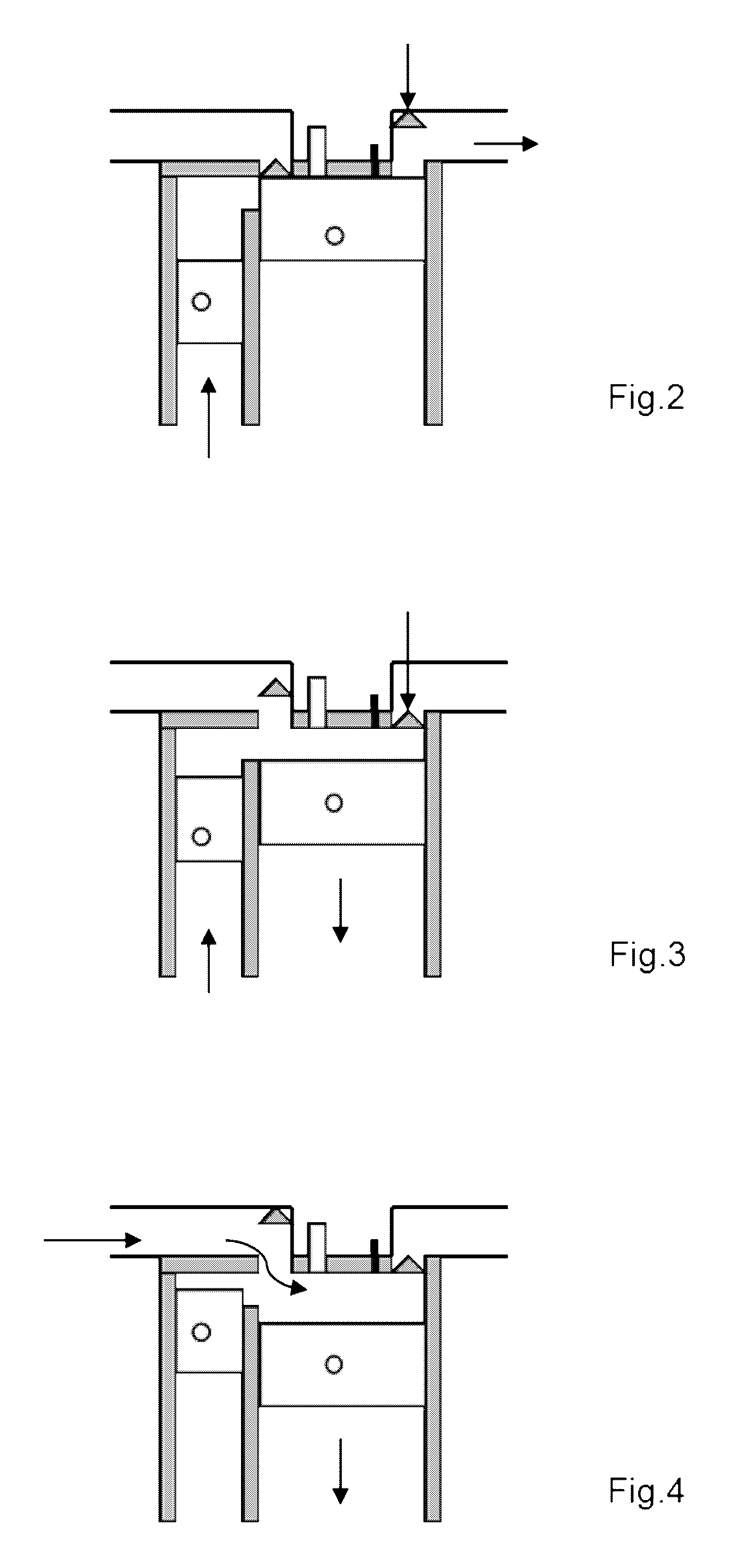Method for operating an internal combustion engine
- Summary
- Abstract
- Description
- Claims
- Application Information
AI Technical Summary
Benefits of technology
Problems solved by technology
Method used
Image
Examples
Embodiment Construction
[0032]The invention being specified is realized in an internal combustion engine (FIG. 1) composed of a main cylinder 1, inside which there is a main piston 2, and an auxiliary cylinder 3, inside which there is an auxiliary piston 4. The main piston 2 and the main cylinder 1 form the combustion chamber 5, while the auxiliary piston 4 and auxiliary cylinder 3 form the combustion chamber 6, which are joined together and form a common combustion chamber in the upper part of the cylinders 1 and 3. In the common combustion chamber are installed the admission shutoff element 7, the exhaust shutoff element 8, the injector 9 and the spark plug 10. The crankshafts of both pistons are joined together by a rotation phase shift mechanism 11. Thanks to the presence of the auxiliary piston 4, whose crankshaft lags in rotation phase behind the crankshaft of the main piston, the points of transition of the change in overall volume of the combustion chambers 5 and 6, from increase to decrease and vi...
PUM
 Login to View More
Login to View More Abstract
Description
Claims
Application Information
 Login to View More
Login to View More - R&D
- Intellectual Property
- Life Sciences
- Materials
- Tech Scout
- Unparalleled Data Quality
- Higher Quality Content
- 60% Fewer Hallucinations
Browse by: Latest US Patents, China's latest patents, Technical Efficacy Thesaurus, Application Domain, Technology Topic, Popular Technical Reports.
© 2025 PatSnap. All rights reserved.Legal|Privacy policy|Modern Slavery Act Transparency Statement|Sitemap|About US| Contact US: help@patsnap.com



